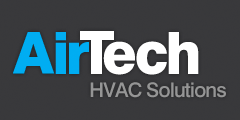Project Management Procedure
Tender/Estimation/Bidding/Order
- Receive Tender with the details of all specifications and standards.
- Engineers Study Drawings and arrive at a cost for total area of work required for production and installation, normally based on a square meter basis.
- Engineers Produce BOQ based on spec and submit price
- Notes are taken on the nature of work, time needed, along with any requirements or special circumstances pertaining to the actual work site.
- Agree On Final Costs.
- An acceptance order is issued once the order is realised.
Project preliminaries
- Collection of Co-ordinated Drawings from our clients.
- Submission of materials specification data sheets / samples from our project managers to the client for approval.
- Submission of Product Samples from our project managers to the client for approval.
Material Procurement & Inventory
- Once material is approved the purchase department starts the procedures for procurement.
- Logistics department coordinates delivering of materials.
- Inventory department will take note of the receipt of the materials, conduct quality control checks and store until delivery from the site for installation.
Site preliminaries
- While the material is procured, our site engineer will make tagged drawings with the help of draftsmen from the co-ordinated drawings. These tagged drawings will be issued around the factory for production purposes.
Production Process
- Once receiving the tagged drawings, the factory supervisor will make a fabrication schedule for the ducts to be made after co-ordinating with the site supervisors.
- The Fabricators receive the fabrication schedule and dimensions of the ducts to be fabricated.
- CNC Fabricators process the data into CNC Machines such as coil line and Plasma.
- The square ducts are processed through the CNC operated Coil Line machine to make ducts of 1200mm (standard length). This duct is then passed through the RAS duct zipper for seam joining and Automatic Precision Cleat bending machine for “C” Cleats to form complete duct. At each stage, a factory foreman is continuously monitoring the quality. After completion, these ducts are sent to quality inspection by the Quality Assurance Department.
- The Duct fittings are processed through the CNC-controlled Plasma Cutting System. The fabricator feeds the data in to the system and the system automatically nests the parts on the sheets with the precise measurements. The Plasma Cutting tables are then loaded with GI sheets and the fittings part are cut. The fabricator identifies the pieces with the help of layout prints and marks the dimensions along with fabrication instructions that deal with bending, rolling etc. These parts then are passed through duct beader to strengthening the sheets by grooving them.
- After beading, the parts are passed through various processes such as lock-forming, rolling, bending, flanging, spot welding and cleat bending as per the requirements of the fittings. The fitting parts are then moved to the assembling section, where the parts are assembled, while it’s add on flanges are fixed, stiffeners for large ducts are added etc. The factory foreman monitors all the processes so as to ensure the highest quality of products.
- The assembled duct fittings are then sent to the quality assurance and inspection department.
- The logistics department will arrange the delivery of the completed ducts and ensure safe and speedy delivery at site.
